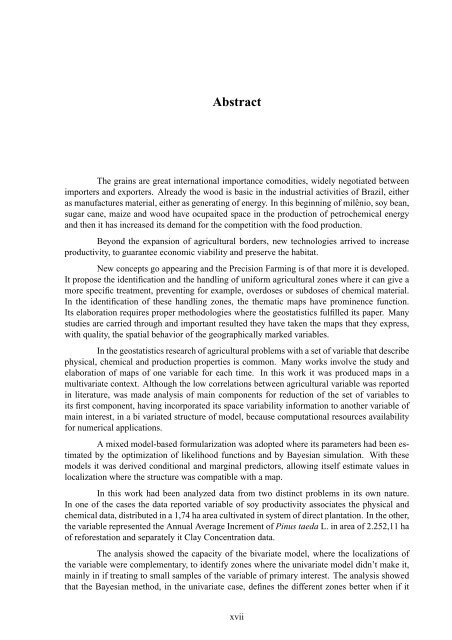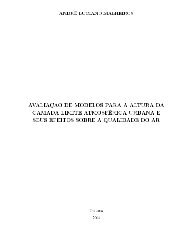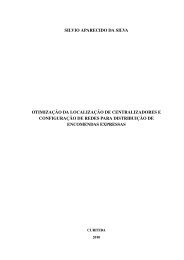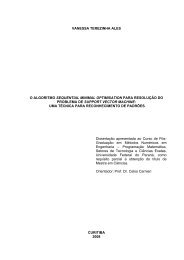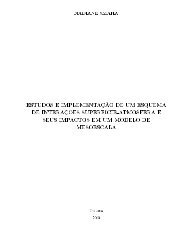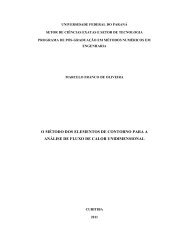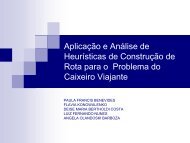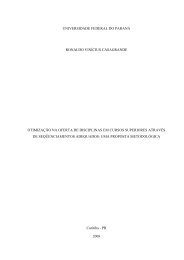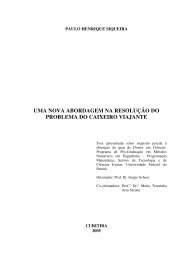14 - PPGMNE - Universidade Federal do Paraná
14 - PPGMNE - Universidade Federal do Paraná
14 - PPGMNE - Universidade Federal do Paraná
Create successful ePaper yourself
Turn your PDF publications into a flip-book with our unique Google optimized e-Paper software.
AbstractThe grains are great international importance comodities, widely negotiated betweenimporters and exporters. Already the wood is basic in the industrial activities of Brazil, eitheras manufactures material, either as generating of energy. In this beginning of milênio, soy bean,sugar cane, maize and wood have ocupaited space in the production of petrochemical energyand then it has increased its demand for the competition with the food production.Beyond the expansion of agricultural borders, new technologies arrived to increaseproductivity, to guarantee economic viability and preserve the habitat.New concepts go appearing and the Precision Farming is of that more it is developed.It propose the identification and the handling of uniform agricultural zones where it can give amore specific treatment, preventing for example, over<strong>do</strong>ses or sub<strong>do</strong>ses of chemical material.In the identification of these handling zones, the thematic maps have prominence function.Its elaboration requires proper metho<strong>do</strong>logies where the geostatistics fulfilled its paper. Manystudies are carried through and important resulted they have taken the maps that they express,with quality, the spatial behavior of the geographically marked variables.In the geostatistics research of agricultural problems with a set of variable that describephysical, chemical and production properties is common. Many works involve the study andelaboration of maps of one variable for each time. In this work it was produced maps in amultivariate context. Although the low correlations between agricultural variable was reportedin literature, was made analysis of main components for reduction of the set of variables toits first component, having incorporated its space variability information to another variable ofmain interest, in a bi variated structure of model, because computational resources availabilityfor numerical applications.A mixed model-based formularization was a<strong>do</strong>pted where its parameters had been estimatedby the optimization of likelihood functions and by Bayesian simulation. With thesemodels it was derived conditional and marginal predictors, allowing itself estimate values inlocalization where the structure was compatible with a map.In this work had been analyzed data from two distinct problems in its own nature.In one of the cases the data reported variable of soy productivity associates the physical andchemical data, distributed in a 1,74 ha area cultivated in system of direct plantation. In the other,the variable represented the Annual Average Increment of Pinus taeda L. in area of 2.252,11 haof reforestation and separately it Clay Concentration data.The analysis showed the capacity of the bivariate model, where the localizations ofthe variable were complementary, to identify zones where the univariate model didn’t make it,mainly in if treating to small samples of the variable of primary interest. The analysis showedthat the Bayesian method, in the univariate case, defines the different zones better when if itxvii


